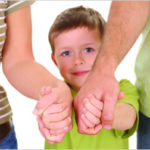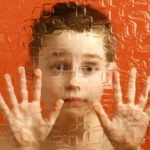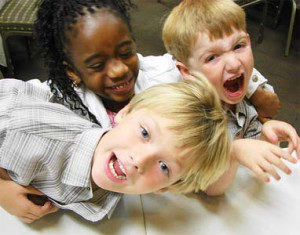 ADHD and ADD – What’s the Difference?
ADHD and ADD – What’s the Difference?
Attention deficit hyperactivity disorder (ADHD) and attention deficit disorder (ADD) are two commonly diagnosed disorders in children. It is estimated that approximately 8.4% of children ages 3-17 are diagnosed with ADHD. Though the two disorders are very similar, they do have a handful of different symptoms.
What is ADHD exactly?
It is a common behavioral disorder in children, though it can be hard to diagnose. Since many children tend to be active when growing up, it’s hard to draw the line where excessive energy turns into disorder. Signs of Attention Deficit Disorder in children with ADHD may show as they typically act impulsively, are hyperactive, and have difficulty focusing. They may have full understanding of what they are supposed to be doing, yet they cannot follow through due to their restless nature. They tend to have difficulty sitting still and focusing on the task at hand. The problem with diagnosing this disorder is that many kids have trouble focusing on subjects that they are not interested in, whether it is at school or at home.
ADHD in children tends to be accompanied by a handful of telltale signs. There are 3 types of ADHD –
- inattentive
- hyperactive-impulsive
- combined.
- The inattentive ADHD child finds it difficult to pay attention to details and tends to make careless mistakes both in school and other important areas. They may have difficulty maintaining attention during various tasks, and they find it difficult to listen to others and follow directions. They are commonly disorganized, and try to avoid tasks that require a lot of mental effort. They tend to be extremely forgetful, and lose important items such as their favorite toys or their school notebook.
- The hyperactive-impulsive ADHD child always finds it difficult to stay still during daily activities. They are often found fidgeting or squirming, and don’t like to remain seated for extended periods of time. They can be found running around or climbing on things they aren’t supposed to, and have a problem staying quiet during playtime. They never run out of things to talk about, and they can even blurt out an answer to a question that hasn’t been finished yet. They find it difficult to wait their turn, and tend to interrupt other people’s conversations or cut in line.
- The combined type of ADHD is the most common, where the child exhibits symptoms of both the inattentive and hyperactive-impulsive types.
If you believe your child is experiencing symptoms or signs of ADHD, you should evaluate them over a longer period of time. If these symptoms persist over time and occur in a variety of different settings, you may want to get them evaluated by a professional. Attention deficit hyperactive disorder becomes a problem when it begins to impair the child’s ability to function either socially or academically. You may like to try you child on Omega 3 / DHA Fish Oil. I like the fact these are all organically created, have zero chemicals and the fish Oils come from the pristine seas around New Zealand.![]() Since there’s no direct ADHD diagnosis test, it can be difficult to determine whether your child is simply full of life and energy or has a behavioral disorder. In order to determine whether or not your child may be diagnosed with ADHD, your child must have displayed a handful of symptoms from 1 of the 3 subtypes before the age of 7, and these symptoms must be more severe than in other children of the same age.
Since there’s no direct ADHD diagnosis test, it can be difficult to determine whether your child is simply full of life and energy or has a behavioral disorder. In order to determine whether or not your child may be diagnosed with ADHD, your child must have displayed a handful of symptoms from 1 of the 3 subtypes before the age of 7, and these symptoms must be more severe than in other children of the same age.
The symptoms must also last continuously for at least six months, and they must negatively affect at least 2 areas of the child’s life – including, but not limited to, school, home, or daycare.
A professional will ask you a set of questions about your child, such as whether or not these symptoms may be the cause of emotional stress at home. They may also reach out to other people who come in frequent direct contact with your child, such as teachers or daycare providers. A careful analysis of behavior over an extended period of time will help determine whether or not your child has ADHD.
Safe Natural Treatments and Supplements for your Child with ADHD
Though this behavioral disorder cannot be completely cured, there are ADHD treatments that help alleviate many of the symptoms. In the majority of cases, ADHD is treated with a combination of behavioral therapy and medication.
Behavioral therapy includes creating a daily routine that helps the child get organized and avoid distractions. This can include following the same schedule every day (such as waking up at the same time and doing homework at the same time), as well as turning off any potential distractions when the child is trying to do homework. The most common medications for ADHD treatment are stimulants. Though it may seem as though giving a stimulant to a hyperactive child is a poor choice, studies have shown that these medications actually help balance chemicals in the brain and sharpen concentration.
Natural Supplements from the Xtendlife Range
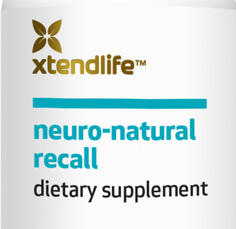 Neuro-Natural Recall is one of the Natural remedies we would recommend to help with ADHD. It contains ingredients that help to calm the nervous system and concentrate neurotransmitter function :
Neuro-Natural Recall is one of the Natural remedies we would recommend to help with ADHD. It contains ingredients that help to calm the nervous system and concentrate neurotransmitter function :
- it assists with the ability to pay attention, (which is a major component of the condition)
- improves memory of course and
- helps to reduce stress,
- and also contains ingredients to help balance specific neurochemical deficiency.
 Omega 3/DHA Fish oil Mini Gels would be helpful to :
Omega 3/DHA Fish oil Mini Gels would be helpful to :
- restore the balance of essential fatty acids
- and to help maintain good function of the brain
- Read all about the PURE and Effective Omega 3 Products the Pristine waters around New Zealand Here!
What is ADD ( Attention Deficit Disorder )
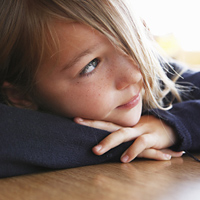 So, what is ADD, and how does it differ from ADHD? Attention deficit disorder is actually one of the subtypes of ADHD – the inattentive type. The definition of ADD states that ADD is a behavioral disorder diagnosed in childhood that is characterized by a short attention span that interferes with the functions of everyday life.
So, what is ADD, and how does it differ from ADHD? Attention deficit disorder is actually one of the subtypes of ADHD – the inattentive type. The definition of ADD states that ADD is a behavioral disorder diagnosed in childhood that is characterized by a short attention span that interferes with the functions of everyday life.
These children tend to be very sluggish and slow to respond to others and process information. They have difficulty determining what information is relevant to their task and what isn’t, and have problems with daydreaming instead of paying attention to others.
A common ADD symptom is the tendency to be very shy, more so than the typical shyness that comes from being a new student in a classroom full of unfamiliar faces. As opposed to the thrill-seeking impulsive behavior of children with ADHD, those with ADD tend to be anxious and avoid daring activities. Symptoms of ADD in children do not only appear at school but appear at home, at daycare, and everywhere else the child goes. If the symptoms are situational, the child should not be diagnosed with ADD.
Though many children tend to be either shy or hyperactive during their early years of development, it’s important to be aware of when these symptoms begin to become a problem. When your child’s tendency to daydream or restless behavior begins to interfere with his or her school or home life, you may want to consult a professional to determine whether or not they may have ADD or ADHD. If your child is diagnosed with a behavioral disorder, treatment is available and they can continue to live healthy, productive lives.
ADHD and ADD are not life-threatening disorders by any means, but they may need to be diagnosed and treated in order to help your child become the most successful he or she can be.
For more information on What is Autism,Click here
From our hearts to yours,


